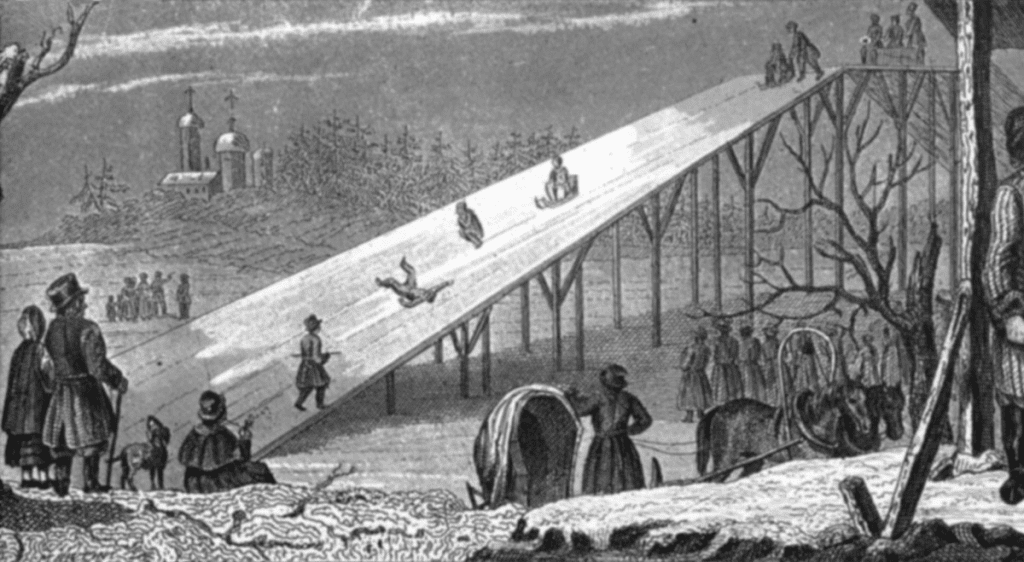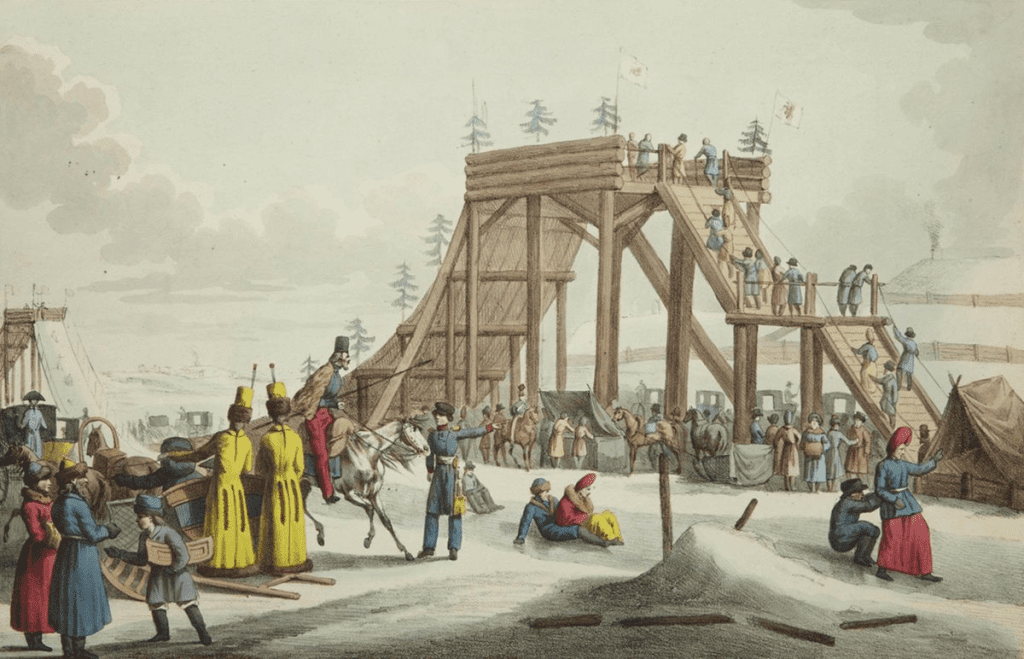The Icy Origins of a Global Thrill
Before Disneyland, Six Flags, or even wooden coasters in America, the thrill of roller coasters was already capturing hearts and testing nerves on the icy hills of 17th-century Russia. In the 1600s, Russian aristocrats weren’t just content with ballroom dances and fine dinners. Instead, they built towering ice slides, standing up to 80 feet tall, where they could launch themselves down at daring 50-degree angles.
These icy descents were not just a winter pastime. They were the very beginning of what we now know as the roller coaster.

Russian Mountains: The First Thrill Rides
The Russian name for these early rides was “Russian Mountains” or “Montagnes Russes.” These weren’t simple backyard sled runs. They were architectural wonders carved from massive blocks of ice. Builders would pour water over ramps at night so it would freeze, then craft smooth, slick tracks for maximum speed.
Video: Essential Roller Coaster History, Episode 1: From Russia With Love (1500’s – 1910’s)
Riders would climb to the top using stairs, hop on wooden sleds or blocks of ice with straw cushions, and race downward at incredible speeds. Spectators would gather to watch as these nobles flew down the slides with both elegance and recklessness.
Catherine the Great Takes It Further
In 1784, Empress Catherine the Great of Russia took the icy concept and gave it a revolutionary upgrade. She had a summer version constructed one that didn’t rely on freezing temperatures. This innovation introduced wheels and grooved tracks, allowing sleds to run along wooden rails.
This marked a key turning point. Catherine’s track-based design brought the thrill of the ride into warmer months and laid the foundation for mechanical roller coasters. Her design wasn’t just a noble amusementit was a technological leap.

France Follows the Trend
The innovation didn’t stay within Russian borders for long. French engineers and aristocrats were so inspired by Russian Mountains that they began building their own. By the early 1800s, Paris saw the construction of the Promenades Aériennes, one of the first fully wheeled, track-based amusement rides.
This French version featured cars locked into a fixed rail and was powered by gravity, just like the Russian originals. But now the rides had a mechanical elegance and safety improvements that allowed for even greater thrills.

The French added their own name to the concept, still calling them “Montagnes Russes” in honor of their icy inspiration. This term would later influence languages across Europe and beyond, especially in Spanish and Italian, where “Russian Mountains” still means roller coaster today.
Roller Coasters Evolve Across Continents
Video: Why roller coaster loops aren’t circular
From these 18th-century roots, roller coasters began to evolve rapidly:
- In the 19th century, America entered the scene with wooden roller coasters inspired by mine tracks.
- The first looping coasters emerged in the late 1800s, pushing the boundaries of what riders could stomach.
- Steel construction took over in the 20th century, introducing loops, corkscrews, and massive drops that make modern coasters what they are today.
But all of this excitement every scream, every drop, every rush of adrenaline can be traced back to Russian nobles risking it all for a ride down an icy hill.
Why It Still Matters Today
It’s easy to think of roller coasters as modern inventions, symbols of summer vacations and amusement parks. But their origin is a fascinating story of imperial play, bold engineering, and human desire for speed and sensation.

The Russian Mountains were more than icy slopes. They were a declaration of creativity. They showed that entertainment and innovation can go hand in hand. Catherine the Great saw their potential and helped redefine them for a new era. France turned the icy thrill into a year-round machine. And from there, the rest of the world never looked back.
Conclusion: From Frozen Hills to Steel Giants
Next time you strap into a roller coaster, whether it’s a record-breaking ride at Cedar Point or a scenic one at your local fair, take a moment to remember where it all began. It wasn’t in a factory. It wasn’t in an engineering lab. It was in the snowy courtyards of Russian palaces, where nobles dared gravity for fun and paved the way for centuries of thrilling innovation.


